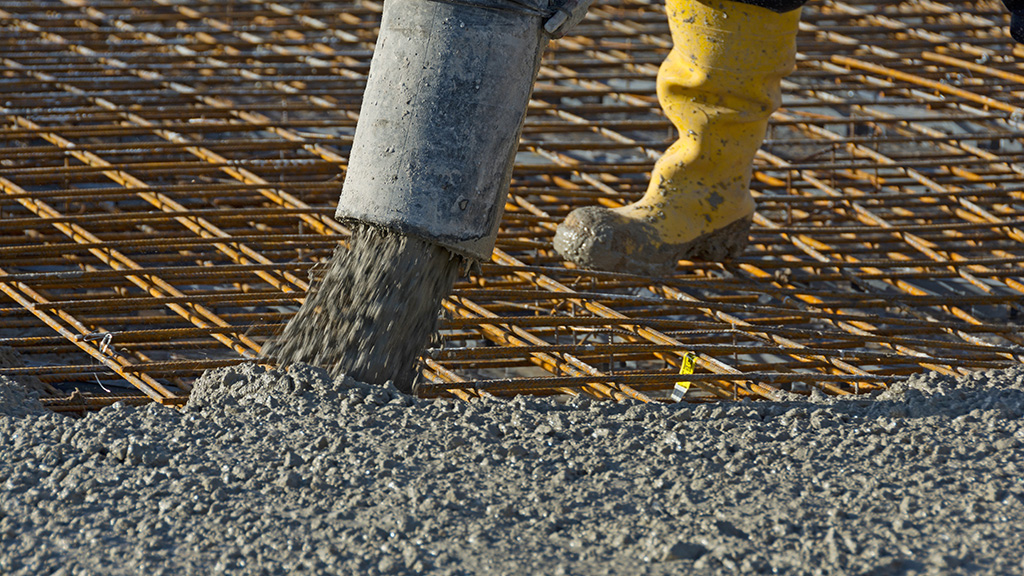Despite concerns over Reinforced Autoclaved Aerated Concrete (RAAC) surfacing in Ontario, a British Columbia First Nation chief is convinced it’s the right product to rebuild his community devastated by wildfire.
Chief Patrick Michell of the Lytton First Nation says he has a massive task to restore and protect the structures following the June 2021 fire which all but wiped out the town and destroyed much of the reserve housing and the community centre.
Two people died and up to 2,000 people on the reserve were left devastated.
Michell says he’s researched options and consulted with architects and engineers and in his view RAAC is the best option.
“I have eight new builds and 195 rebuilds and the lost asset of the memorial hall,” he says. “As I understand it RAAC can be used as something innovative to show we’re not just hewers of wood and that we can transition.”
His plan is to build an “exoskeleton” of RAAC block around the houses that survived the fire but were scorched and remain vulnerable to the existing dry summer conditions should another fire jump up.
He says they will use RAAC blocks and roofing panels to “wrap” the structures and protect them from future fire risk.
The key, he says, is to then ensure the surface is protected from condensation or water infiltration. They plan on using a formulated stucco on the walls to seal them while painting the interior floors and laying a steel roof over the RAAC panels.
New construction will be similarly protected, he says.
“These are multi-generational homes,” he says. “They are quite big. My home has 17 people living in it, myself and kids and grandkids so it’s about 2,400 square feet.”
The benefits go beyond fire protection, he says.
“First it’s cooler in the summer because there’s no thermal bridging and warmer in the winter for the same reason and it gets to -32C here,” he says. “We’re also going to use solar panels and batteries so that will cut our energy costs from about $600 a month.”
He says reserve housing has traditionally been substandard because it was underfunded.
“The Government of Canada gave us $1 when we needed $1.75,” he says. “We’re going to build back better and smarter. Our First Nation is going to take the lead on this.”
Despite the issues with the Ontario Science Centre and schools resulting from the degradation of RAAC roofing panels, which have a limited lifecycle of only 30 years, Michell says he’s looked at other jurisdictions in the U.S. where RAAC is widely used.
“It’s also manufactured in the U.S., Mexico and Europe,” he says and there’s no evidence of problems where the product has been properly installed and maintained.
His biggest problem right now, he says, is trying to get a supply of RAAC components to the reserve. The shipping costs are a barrier, he says, but once onsite he’s certain work will proceed quickly.
Ideally, he says, he’d like to get a manufacturing plant set up on his reserve or nearby to supply the region.
He’s working with AAC Canada Inc, which is distributing the German patented RAAC manufactured by Xella International GmbH in Mexico. Other plans include Germany and Australia.
The so-called Hebel product was devised by German engineer Joseph Hebel in the 1940s though the concept dates back to the 1900s.
“I think maybe the Domtar product failed because someone messed with the formula and changed it,” says Michell. “The ones I have seen personally in the U.S. have no issues.”
Peter Von Sass, chairman of AAC Canada Inc., says Lytton FN can specify RAAC components because it is a reserve and is sovereign land where the Canada Building Code does not apply.
“The problem we have is getting our version of RAAC approved by the the Canadian Construction Materials Centre (CCMC) which makes it possible to use under the Canadian Building Code,” says Von Sass. “When we have that we can look at building a manufacturing plant here. Right now the cost to ship from warehouses in the U.S. is probative.”
AAC has also aligned with Alberta’s Portage College to initiate a 42-hour construction program using RAAC components. The program is ready to go but is waiting on a supply of RAAC products to make it a viable skill worth learning.
Critics of RAAC such as University of Waterloo Prof. John Straube say the panels are often treated as cement products, but they do not have the resilience of concrete especially if they are impacted by water vapour.
The Ontario Science Centre is the epicentre of a political storm since it was closed abruptly June 21 when the province reviewed an engineer’s report showing critical damage to roofing panels. Since then, it’s been learned 366 Toronto-area schools also have roof panel issues.
In Britain hundreds of schools and public buildings are said to be at risk because they used RAAC panels.
They also require constant maintenance and the Royal Institute of British Architects says the panels only have a lifecycle of 30 years.




Recent Comments
comments for this post are closed